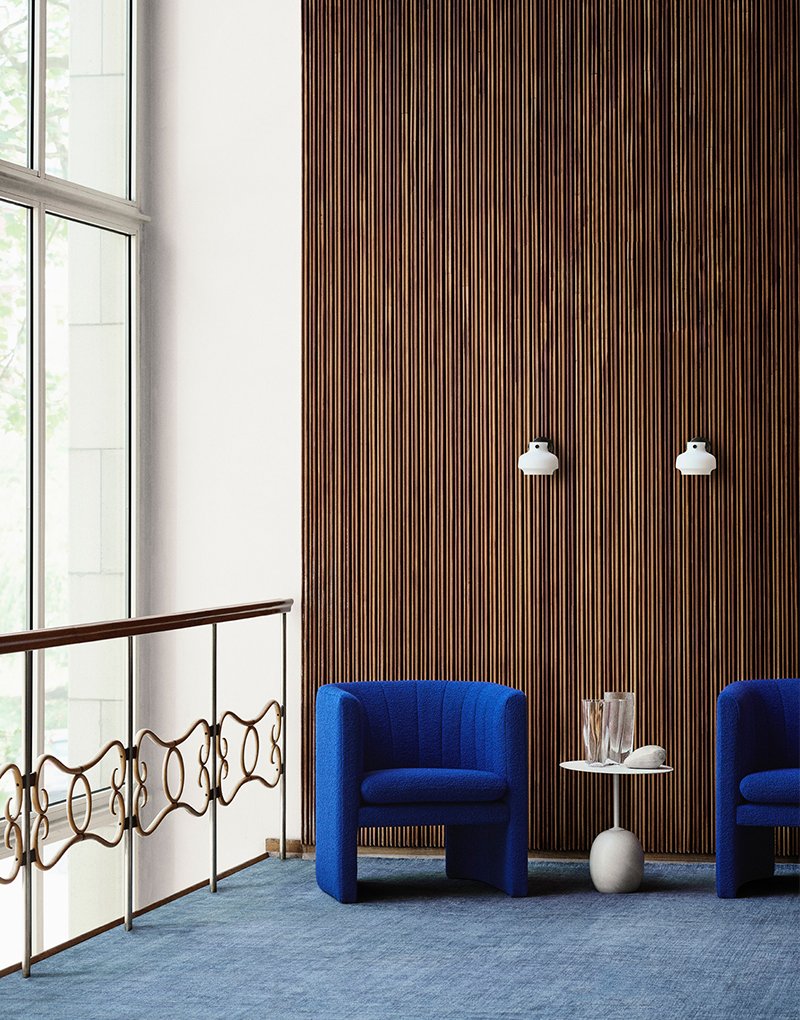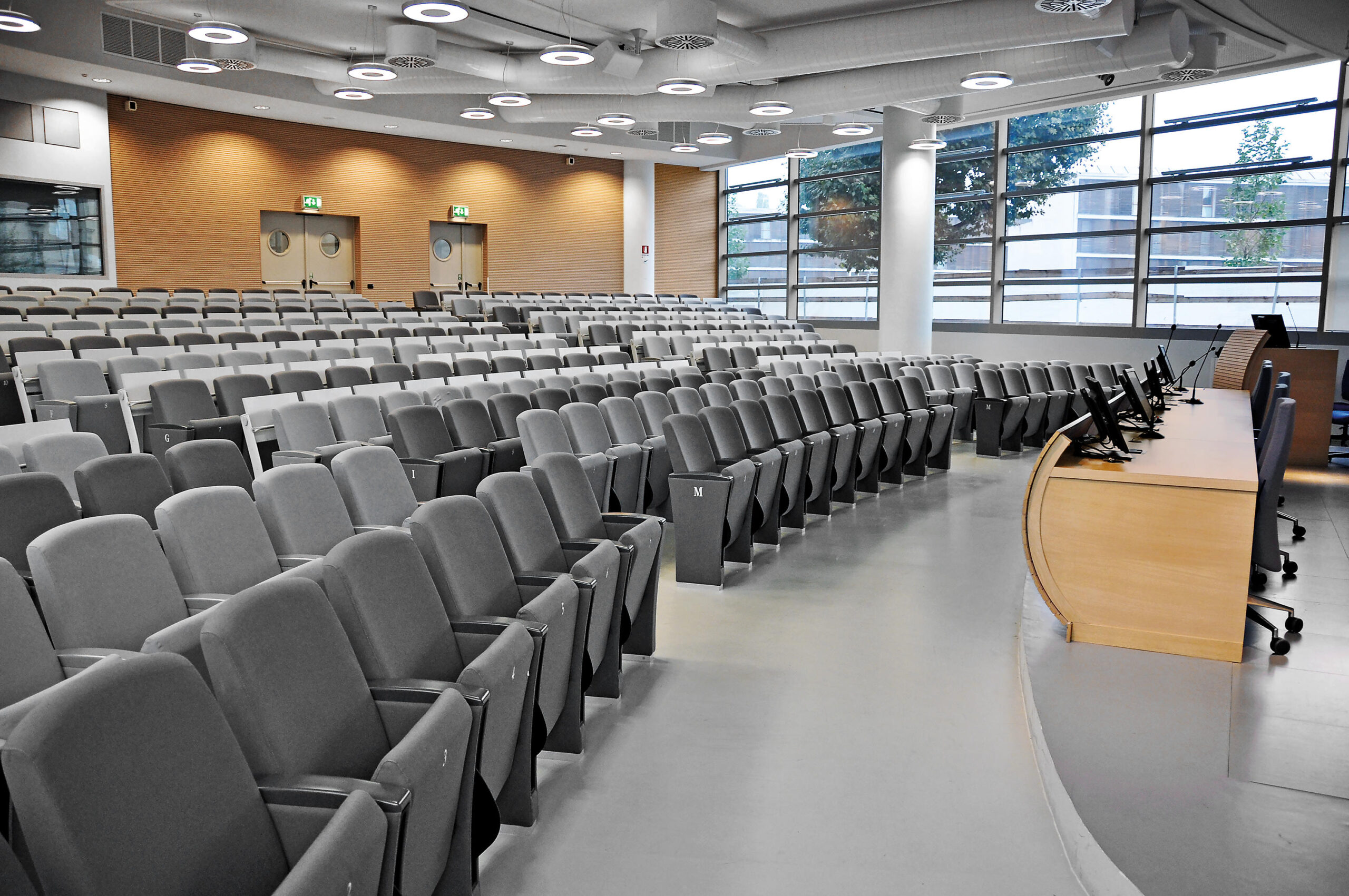In short, seating in an auditorium or conference room has a wider role than its simple functionality. They influence the audience experience, the effectiveness of the event and the overall aesthetics of the space. Investing in quality furniture not only enhances comfort, but also reflects the organizers’ respect for the participants, contributing to the success of any event.
Chairs for auditoriums and conference halls: design trends
Seating for auditoriums and conference halls plays an essential role in ensuring the comfort of the audience and defining the aesthetics of the space. In recent years, their design has evolved to focus on functionality and sustainability.
Performance halls are spaces dedicated to human, cultural or professional interaction. In this context, the choice of the right seating plays an essential role in creating a comfortable and effective experience for the participants. A chair is not just a piece of furniture; it becomes an integral part of the atmosphere and functionality of the space.
The image above gives an overview of these trends in auditorium seating, highlighting a variety of styles and uses. Whether it’s an elegant theater or a multi-functional auditorium, seating choices can completely transform the experience for attendees.
Growing interest in protecting the environment has led to the use of recyclable or eco-friendly materials, such as bamboo, recycled plastics and biodegradable fabrics.
Attendees of a performance or conference can often spend hours sitting down. An uncomfortable chair can distract the audience, reducing the impact of the message conveyed by the organizers or performers.
For example, in theatres or opera halls, seats upholstered with soft materials reduce physical fatigue, contributing to a pleasant experience.
Chairs are essential for efficient space management. Foldable or stackable models allow quick reorganization of the room, depending on the event. In large halls, such as auditoriums, fixed seating, arranged in uniform rows, optimizes visibility and accessibility, contributing to an organized flow of the audience.
Chair design contributes significantly to the overall atmosphere of the room. In a classic theater, chairs with wood accents or upholstery reflect the elegance of the space. Modern conference rooms, on the other hand, prefer a minimalist design with clean lines and neutral colors to maintain a professional look. The materials used, colors and textures should harmonize with the overall décor of the room, creating an atmosphere that supports the purpose of the event, whether it be entertainment, education or business.
This type of auditorium and conference seating is subject to heavy use. It is therefore essential that they are made from durable, hard-wearing and easy to maintain materials. The stain-resistant upholstery and quality metal or wooden frames ensure longevity and keep them looking impeccable.
Another important aspect is accessibility. Seating must be easily accessible for people with disabilities, respecting the rules of use. Also, the layout of these seats for auditoriums should allow quick evacuation in case of emergency.
In conclusion, the role of seating in an auditorium or conference room goes beyond mere functionality. They influence the audience experience, the efficiency of the event and the overall aesthetics of the space. Investing in quality furniture not only enhances comfort, but also reflects the organizers’ respect for the attendees, reinforcing the success of any event.
Concerto is one of the auditorium, conference and performance seating in our product portfolio. It offers a perfect balance between comfort, functionality and design. It is designed to maximize spectator comfort. The integration of sound absorbing materials used for this model implicitly contributes to improving the overall acoustics of the room by reducing the noise generated by the audience.
This model is ideal for performance halls and theaters, conference and congress halls, university auditoriums or cinemas.







